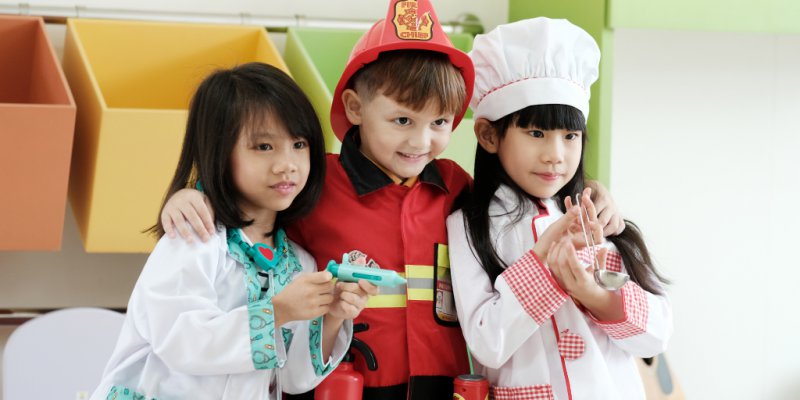Last Thursday night, I was babysitting my 7-year-old nephew, Vincent. He had the minions plush toys screaming, running, jumping, and some point, there were flying minions! I was watching him play, and I couldn’t help but ask him what the fruit is going on.
Me: “Why are you squawking like a parrot? Why are the minions flying? Are they in trouble?”
Vincent: “Nobody is trouble. I am the chief engineer minion. I built a zero-gravity playroom. We are all excited, and the boss (Felonious Gru) is happy.”
I crawled back to the couch wondering what must be going on in that tiny head. He imagines beyond what is real. How does he do that? Ten more questions infiltrated my head just like that. Thus I embarked upon my quest to find the answers, in my comfy pajamas, of course.
I stumbled upon the work of renowned researchers like Prof. Sara Smilansky that present surplus evidence on the positive contributions of play towards children’s development. I also discovered different play techniques (practices) that are common in kids. Let me share my findings with you.
What are the different types of play?
1. Pretend-play is when kids pretend to be someone else. A common example of this type of play is a kid mimicking their teacher and using mom’s lip gloss as a marker pen to evaluate dad’s travel documents (for answer sheets) of students (toys, dolls, figurines) in their class.
2. The play gets a little complicated when their friends are over. There are discussions over which game to play, who plays Thor, how will we devise a spacecraft, and so on. Often, kids select roles for one another. This style of play is called peer play.
3. Sometimes, the teddy is sick, and kids administer a small dose of antibiotic but not before reading the heart rate of the teddy with a stethoscope. Teddy represents a baby. This form of play is called Representational play.
4. And sometimes, friends are imaginary. They could be visiting your kid from a made-up city or a planet far, far away planet. Imaginative play is in progress here.
How do we handle the situation when we are introduced to Kayle from Neptune?
In all honesty, we should approach this situation like another. Let our kids tell us more about Kayle. Ask what Kayle’s planet is like. Discuss Kayle’s likes and dislikes. Talk about Kayle’s parents and how Kayle came to the Earth. Just play along!
Research suggests that kids first start “pretending” between 18 and 24 months. The most common actions include mimicking adults – wearing a tie, talking over the phone, or trying to balance themselves attempting the tree pose. We also notice the first signs of “representational thinking” during this period. Kids use one object for another (like a lip gloss for a marker pen or teddy for a baby). By the time they turn four, their imagination grows wild. They will be able to create scenarios that are very elaborate (like Kayle).
How to support and encourage play?
1. Make room for them to play:
Grandpa’s couch, under the dining table, inside mom’s wardrobe are wonderful places to be imaginative, creative, and to play. Throw a blanket and turn the couch into a dentist’s chair, dining table a castle, and wardrobe, a teleportation portal.
2. Help them prep for the play:
Kids don’t need much to play with. They are efficient when it comes to playing. They can catch the Pikachu using tomato as a Pokeball. But sometimes, they can’t find themselves in puddle unable to decide on the right props for the play. Help them get what they need for their play. I am not saying that you should bring them a street-legal replica of Batmobile, though that would be amazing, just a couple of cardboards linked together and painted black would do. I did the cardboard Batmobile thing for Vincent last summer.
3. Join the princess’ playdate:
Be a part of their play whenever possible. Knock on their castle’s door and bring in the delivery of ceremonial horse armor for princess’ engagement ceremony. Call them on their pretend-phone and book an appointment with the dentist. Kids love it when parents are their partners in play.
4. Listen, encourage and enrich:
Play is constructive, and it aids the development of cognitive, creative and emotional abilities which are essential in life. By encouraging and being a part of their play, we support them in their adventure of discovering themselves, contribute positive morality, and give them the greatest gift, childhood.
Play helps kids explore the world around them and adapt to the ways of life. Play contributes to cognitive development as kids retrieve old information and link it with what they discover new. Play fosters emotional regulatory skills and it helps in initiating social relationships. Play also amplifies reality and keeps them company for years to come. Don’t limit your kids to play for some unwarranted fears. For, play is our brain’s favorite way of learning.




